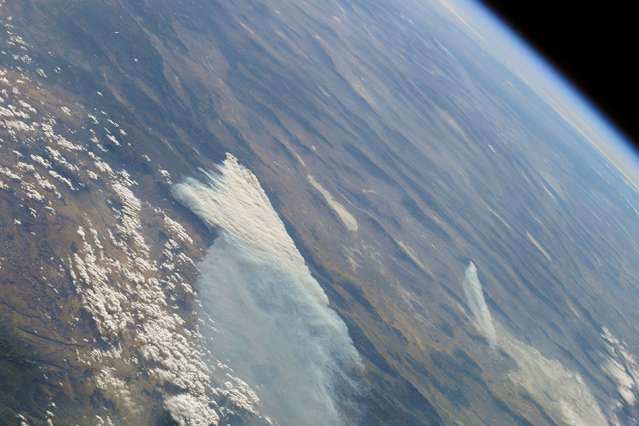Study finds human-made aerosols exert strong influence on the geography of precipitation

While the effects of power plant emissions, vehicle exhaust and other manmade aerosols on air quality and public health are well-known, their impact on the climate is not completely understood. Scientists have shown that aerosols can lower surface temperatures either directly, by reflecting sunlight skyward, or indirectly, by increasing the reflectivity of clouds, but until now have not figured out the role these airborne particles play in shaping the distribution of rain and snowfall around the world.
According to a new MIT study in Geophysical Research Letters, the effects of anthropogenic aerosols exert a strong influence in determining where precipitation increases and decreases take place across the globe. Running historical simulations with models that represent aerosol-cloud interactions with far greater precision than in previous analyses, the MIT study indicates that the distribution of precipitation in the second half of the 20th century is dominated by the effects of anthropogenic aerosols over the tropics, and also substantially influenced in non-tropical regions of the Northern Hemisphere.
"While it is true that total precipitation change is controlled by average global temperature change, which, in turn, is largely based on greenhouse gas emissions, our research shows that aerosols have significantly impacted the distribution of precipitation change around the world since preindustrial times," says Chien Wang, a senior research scientist at the MIT Joint Program on the Science and Policy of Global Change and the MIT Department of Earth, Atmospheric and Planetary Sciences.
Using historical simulations running from 1850 to 2005, the MIT study compared results of an ensemble of 10 models from the recent Coupled Model Intercomparison Project Phase 5 (CMIP5), which explicitly represent aerosol-cloud interactions, with those of a set of seven older models that oversimplified these interactions. The new models showed that aerosol-driven precipitation changes occurred not only where aerosol concentrations were high (e.g., the Indian summer monsoon region) but also in a number of far-off locations.
"We compared results with and without aerosols from preindustrial times to 2005, and found that aerosols alone can force a pattern change in precipitation," Wang says. "Because of the sophistication of the new, physically-based models, we can now see that aerosols have a larger impact on precipitation distribution than previously established."
Aerosol concentrations may rise or fall as nations grow their economies, implement clean air policies, or develop in other ways, leading to changes in the distribution of precipitation around the world that could adversely impact economic, agricultural, and other activities. These results suggest that anyone formulating a climate mitigation or adaptation strategy will be wise to consider the potential impact of aerosols on both local and global precipitation patterns.
More information: Chien Wang. Anthropogenic aerosols and the distribution of past large-scale precipitation change, Geophysical Research Letters (2015). DOI: 10.1002/2015GL066416
Journal information: Geophysical Research Letters
Provided by Massachusetts Institute of Technology
This story is republished courtesy of MIT News (web.mit.edu/newsoffice/), a popular site that covers news about MIT research, innovation and teaching.




















